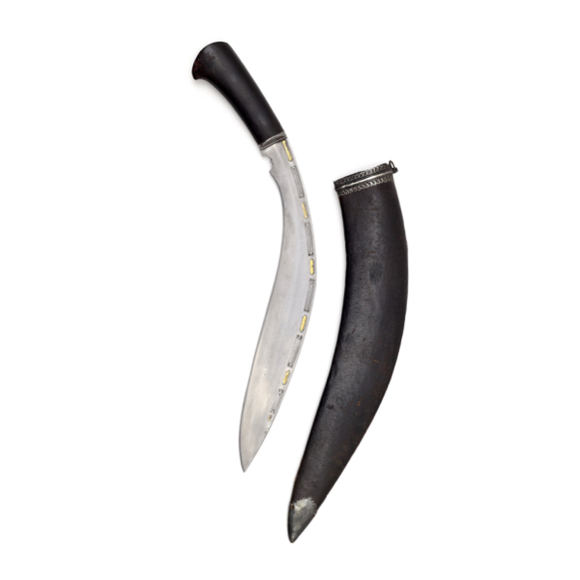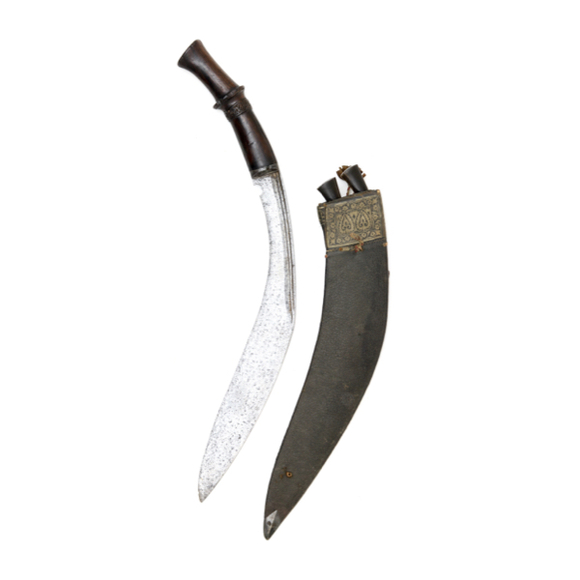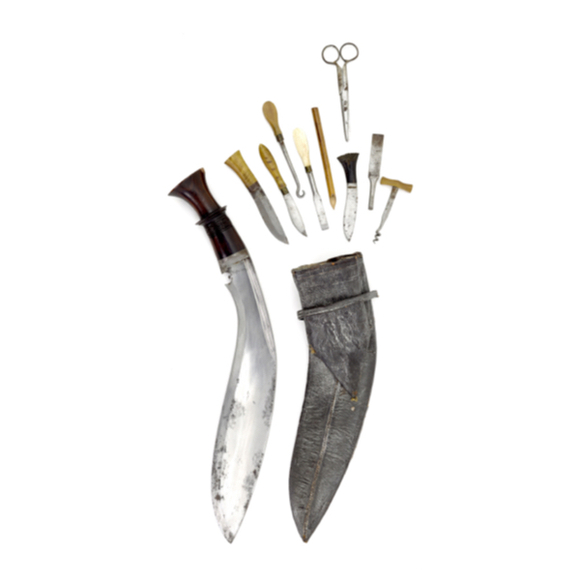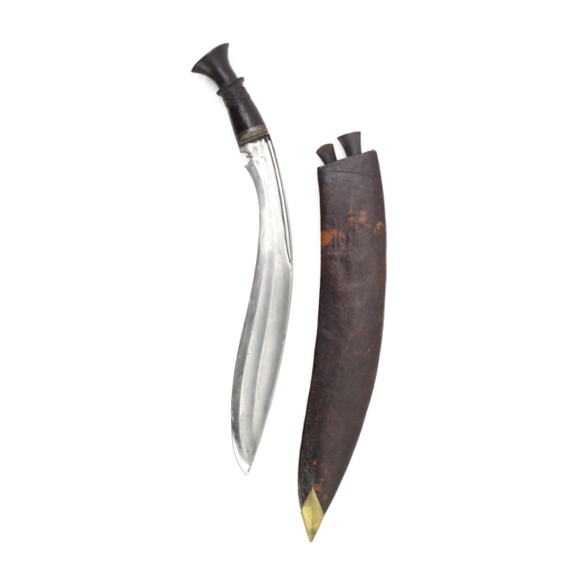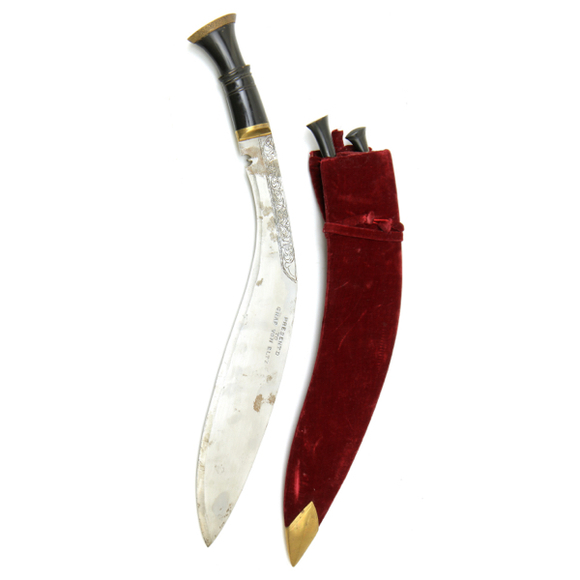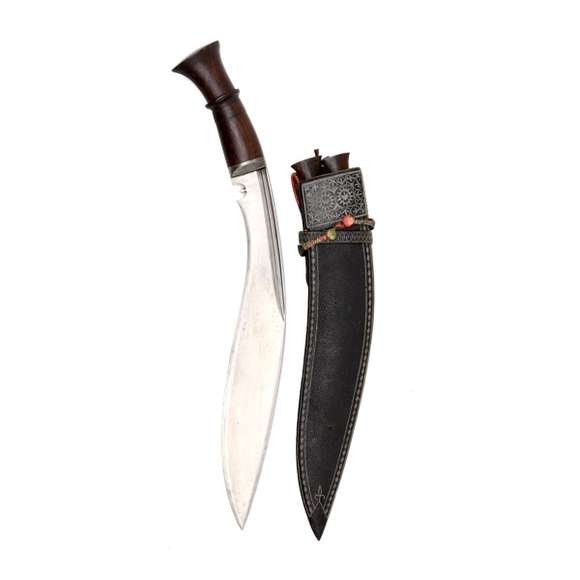With a very fine Nepalese blade, but kard-like hilt and scabbard.

41 cm
31.5 cm
Base 10 mm
Middle 9 mm
5 cm from tip 6 mm
Narrowest at base 30 mm
Widest at belly 58.5 mm
568 grams
12 cm from hilt
Iron, steel, wood, bone, leather, plant fiber thread
Nepalese
First half 20th century
Ex John Powell collection.
Description
A good old khukurī with a relatively broad blade also known as budhune khukri ( बुधुने खुक्रि).
Blade of the usual classic shape with two narrow grooves running long the spine at the base, and a ridged back. The "flats" of the main blade are subtly hollow-ground, thickening somewhat both at the spine as well as at the secondary bevel that leads to the edge. Blade in decent condition, but with a depression in the "sweet spot" of the belly, a result of repeated sharpening of this area.
The hilt has an iron bolster and the grip is made of wood and cattle bone, both in high polish. The pommel narrows and then flares out dramatically, a shape seen from the late 19th century onwards and which become almost the norm during the 20th century.
The pommel is capped with brass sheet, secured with a screw. The plate is meant to protect the delicate edges of the flaring wooden pommel, but did not succeed in doing so: There are bends to the plate and chips to the pommel edge.
It comes complete in its original scabbard, made of wood and covered in fine grained black leather. It retains all the pockets on the back, but none of its contents. It has an iron chape. There is a split at the top end of the scabbard, see photos.

Photo of a Nepalese family. Photographer unknown. 1880s.
Notice his khukurī with similarly flaring pommel.










Early type with very shallow notch in the blade and little flare in the pommel.
20th century military khukurī with many different tools in its back pocket.
Very large presentation kukri from the Sundarijal Arsenal in Nepal.
An understated, elegant khukuri of substantial proportions with fine layered blade.

